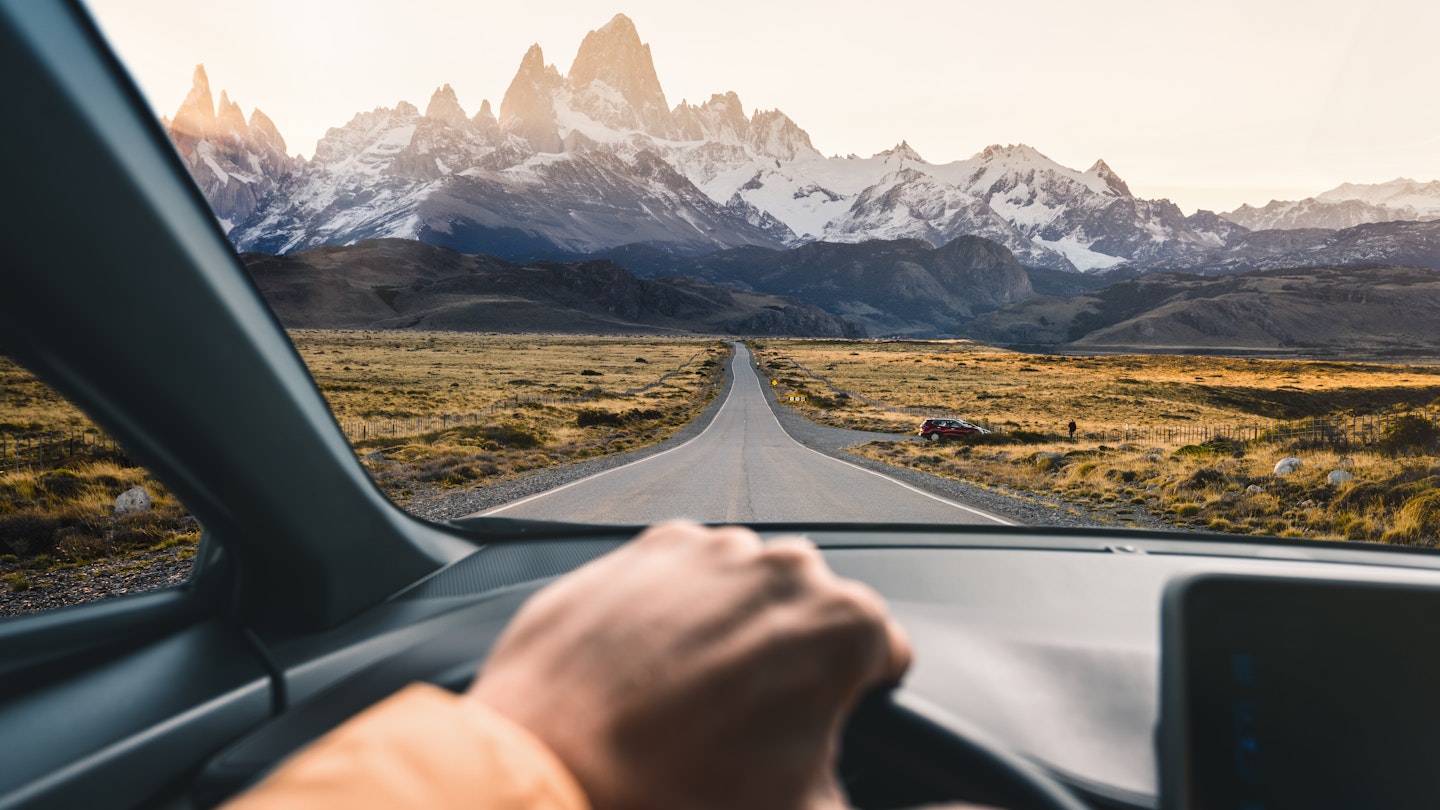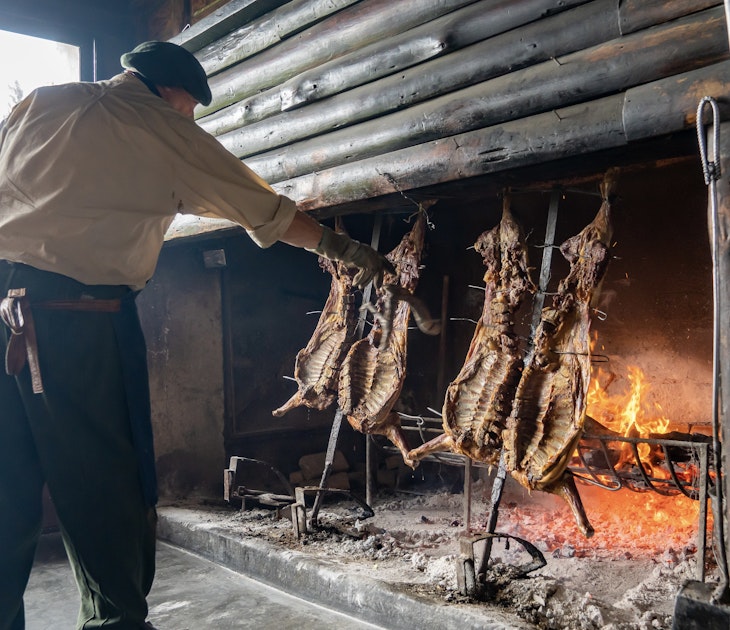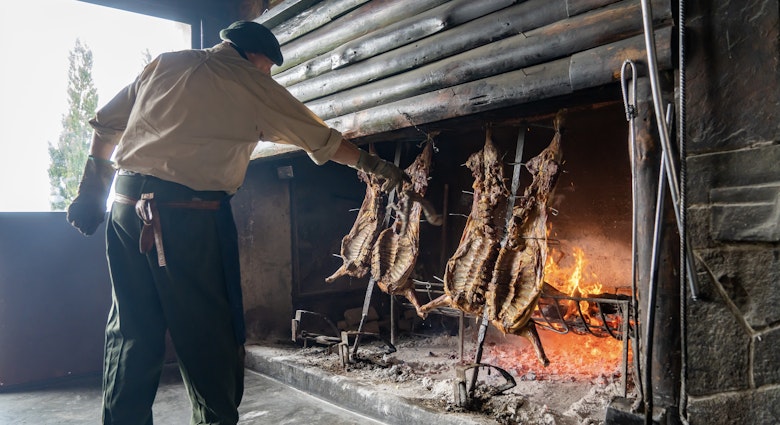Argentina is the eighth-largest country on Earth and, as a result, distances between destinations can be huge. For example, the drive between Buenos Aires and Ushuaia in Tierra del Fuego is more than 3000km (1864 miles).
Fortunately, you'll find a wide range of transport options to get you around. Whether you choose bus, boat, train, plane, bike or car, plan your route with this guide to navigating your way around Argentina.

Buses are the best option for budget travelers in Argentina
Long-distance buses are the most popular and cost-effective way to travel around the country. Known as micros, they are generally modern, comfortable and reliable, with air-conditioning, toilets and reclining seats. Some even have wifi and USB ports.
Various classes of buses and seats are available, especially on popular inter-city routes, including partially reclining semi-cama (semi-sleeper), fully reclining cama (sleeper class) and bigger and more luxurious ejecutivo (executive) and "suite" buses. For long journeys, it’s worth going for the most expensive seat you can afford so you can get some rest as the miles roll by.
You can also expect an attendant serving hot meals, soft drinks and sometimes wine and beer (all of which are typically included in the fare). Many buses have TV screens showing films (often at great volume) and some even have bingo sessions with prizes. Good ear plugs, an eye mask and warm clothes for the often glacial air-conditioning are highly recommended.
Frequently there’s strong competition between companies on busier routes, so look out for promotions. Some bus stations – including Retiro, the main terminal in Buenos Aires – are in slightly shady areas, so keep your wits about you. More positively, many also have handy left-luggage services.
Hiring a car can help you get off the beaten track
Hiring a car gives you more freedom to explore independently and get off the beaten track, particularly in regions such as Patagonia, Tierra del Fuego and the northwest, and in Argentina's spectacular national parks where public transport is limited or infrequent. Although the main highways across the country are usually in good condition, roads in many rural areas are unpaved and dotted with potholes.
Rental cars and gas are generally a bit more expensive than in North America or Europe – it’s worth going for an unlimited mileage deal when you rent. And if you’re planning to drive into a neighboring country, make sure this is covered by the rental agreement and your insurance (you’ll probably need to pay an additional fee).
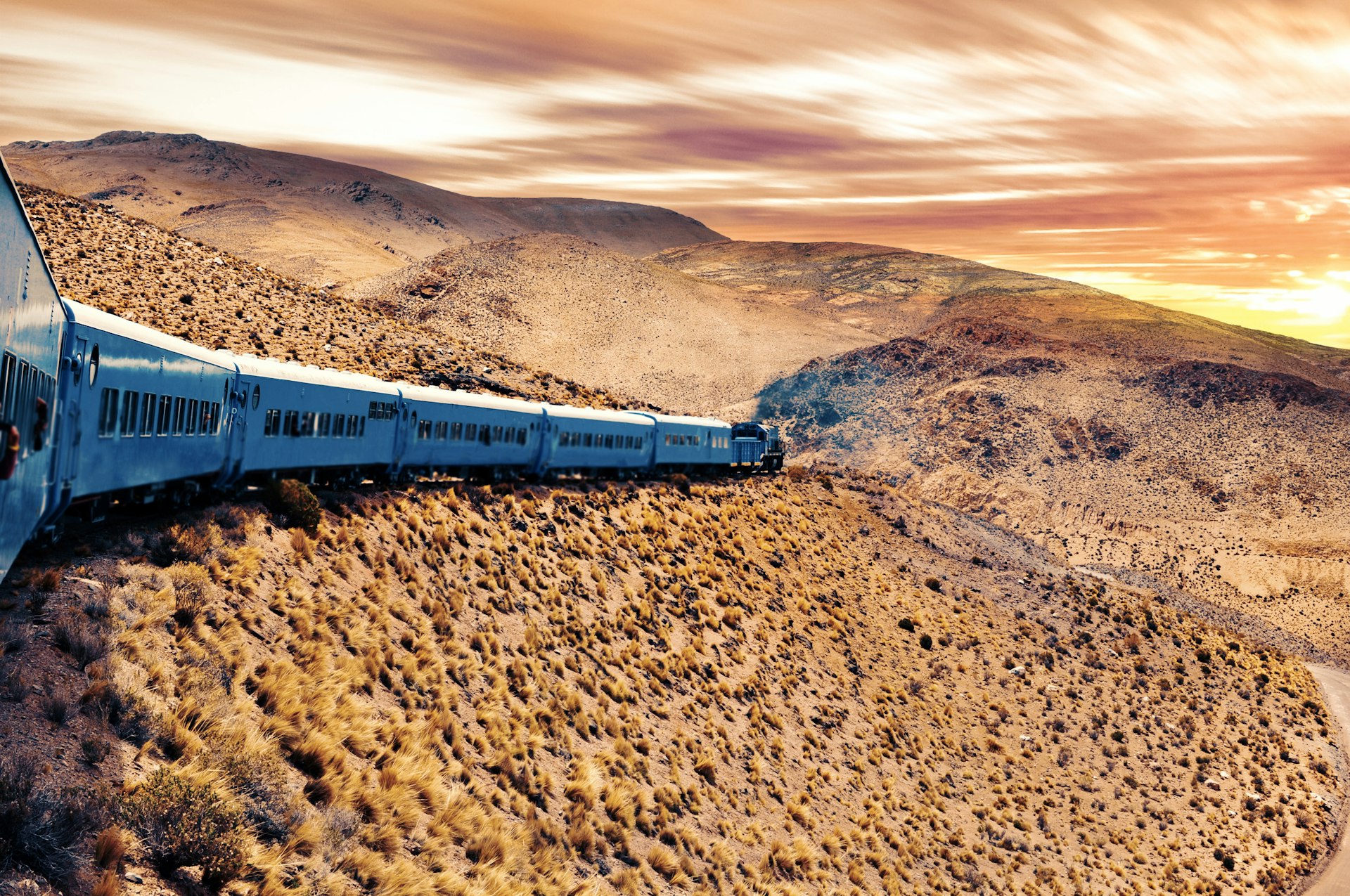
Tourist trains are incredibly scenic
Argentina’s once extensive railway network is now sadly much diminished, with only a handful of long-distance lines still operating, but Buenos Aires has plenty of commuter services, with stations throughout the city, suburbs and surrounding province.
A handful of long-distance trains run to cities such as Mar del Plata, Rosario, Córdoba and Tucumán, and these tend to be cheaper, but slower and less frequent than buses. There are also regional lines in and around Córdoba, Salta and Neuquén, though again they aren’t particularly useful for travelers.
However, there are several popular tourist and heritage trains, including the Tren de la Costa (Train of the Coast), which runs from Buenos Aires to Tigre, the gateway to the Paraná delta, and the scenic Tren a las Nubes (Train to the Clouds) in the high-altitude northwest.
Many visitors take the scenic Tren Patagónico, which runs through the Lake District between Bariloche and Viedma and La Trochita (The Little Gauge), popularized by Paul Theroux’s classic book The Old Patagonian Express. Then there's the Tren de Fin del Mundo (End of the World Train), the most southerly railway on Earth, in Tierra del Fuego.
Planes are an expensive way to explore Argentina
Aerolíneas Argentinas, the national carrier, has the widest range of domestic routes, serving everywhere from Salta in the northwest and Puerto Iguazú in the northeast to Ushuaia in the far south. Across the board, flights are generally a bit more expensive than in Europe or North America, and much more expensive than taking the train or the bus.
LATAM, the biggest airline in South America, has flights to cities across Argentina and to neighboring countries, while LADE, which is operated by the air force, connects Buenos Aires with cities in the Lake District, Patagonia and Tierra del Fuego, notably tourist hubs such as Bariloche, El Calafate and Ushuaia. There are also a few budget airlines with more limited routes, including JetSmart Argentina and Flybondi.
Ferries are useful for crossing into neighboring countries
There are relatively few opportunities for traveling by boat in Argentina. Daily ferries and catamarans sail across the La Plata River between Buenos Aires and Montevideo and Colonia del Sacramento in Uruguay. From nearby Tigre, regular boats travel through the meandering waterways of the Paraná Delta, calling in at island settlements. Boats also travel into the delta from the city of Rosario. And if you’re traveling by bus or car between Patagonia and Tierra del Fuego, you’ll need to cross into Chile and catch a ferry across the Strait of Magellan en route.
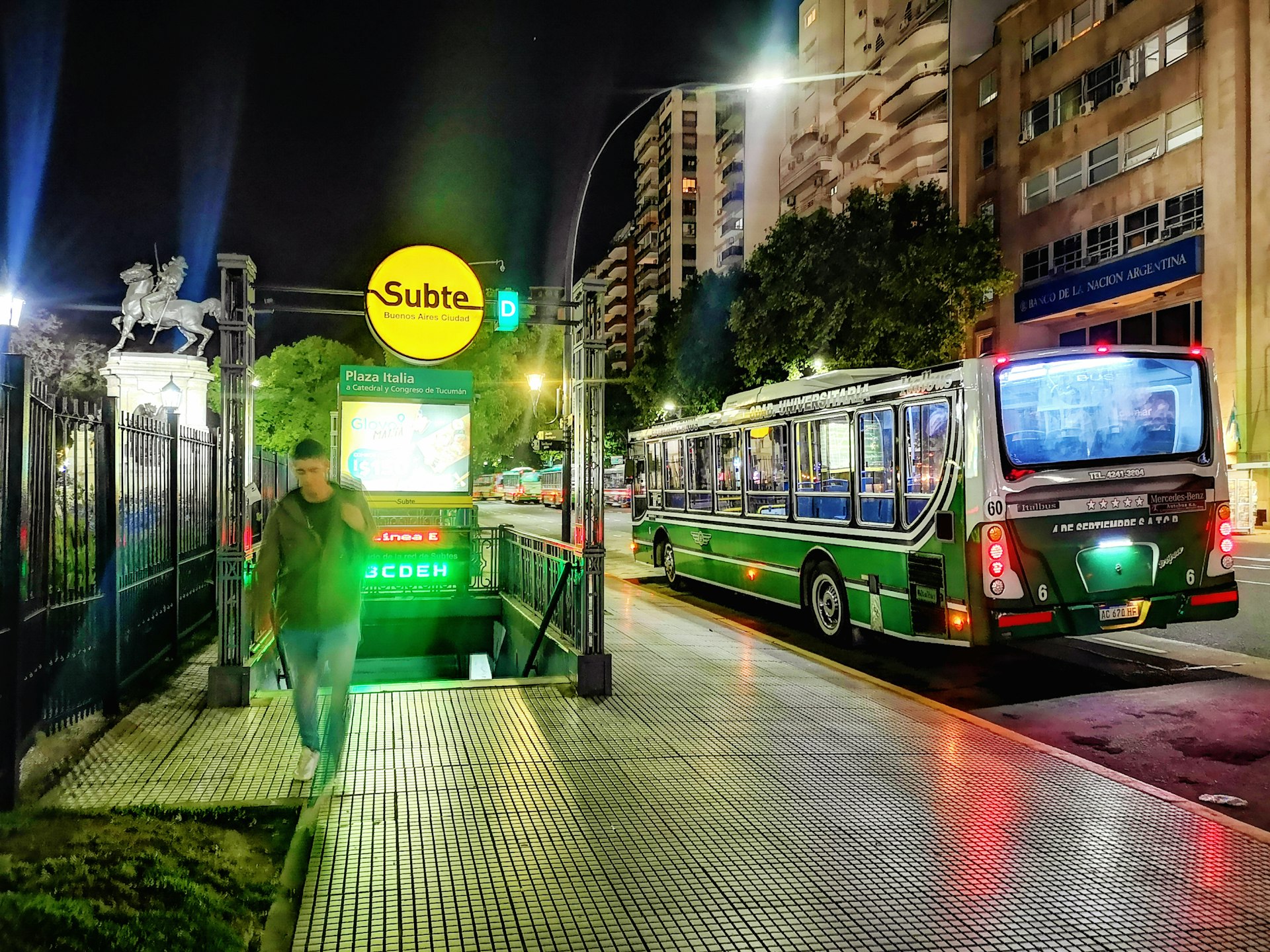
It's best to get around Buenos Aires by subway
Launched in 1913, the Subte in Buenos Aires was the first subway system in Latin America and it remains the only one in Argentina. This is the quickest and cheapest way to get around the capital, with six main lines and frequent services.
To use the Subte, you need to buy a contactless and rechargeable SUBE card. Trains can get uncomfortably packed during rush hour, and can be uncomfortably hot during the summer. Keep a firm grip on your bags, phones and wallets, as pickpockets operate in stations and on trains.
Buenos Aires also has a vast – and sometimes bewildering – network of routes for local buses (known as colectivos), which operate on dedicated bus lanes, reducing congestion. Other cities and towns, including Córdoba and Rosario, also have useful local bus networks.
Taxis are commonplace in Buenos Aires and the bigger cities; if you hail one on the street, make sure the driver uses the meter. Minicabs or radio taxis are known as remises, and have fixed rates for routes. If you are part of a group, it can be cost-effective to hire a remís for a day trip. Uber also operates in Buenos Aires.
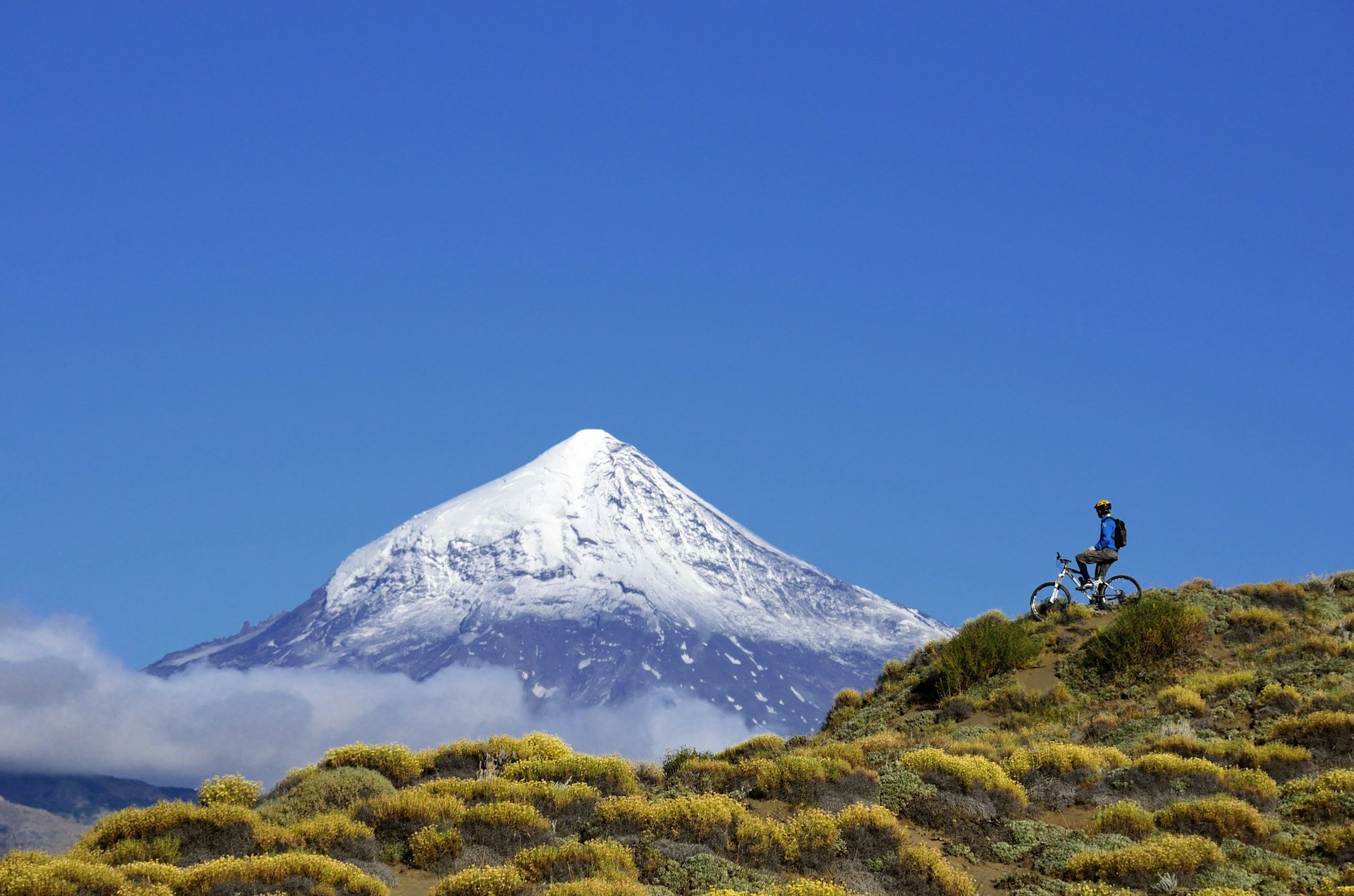
Cycling is an excellent way to explore Argentina
Buenos Aires has more than 250km (155 miles) of bike lanes (bicisendas) and the local authorities are planning to expand the network over the coming years. The city also has a free bike-sharing scheme called EcoBici. Other cities are also improving their cycling infrastructure and bike hire and cycle tours are commonplace.
If you fancy a long-distance or multi-day ride, there are plenty of options, too, from the epic RN-40 (Argentina’s answer to Route 66) to the easygoing Ruta de los Siete Lagos (Seven Lakes Route) in the Lake District.
Accessible travel is slowly improving in Argentina
Unfortunately, Argentina is not the most accessible destination for travelers with disabilities. But the situation is slowly improving in parts of the country, particularly Buenos Aires, where most local buses, some Subte stations and many hotels (especially those built recently) are wheelchair accessible, and pavement curb ramps are increasingly common.
There have also been improvements at key attractions such as Parque Nacional Iguazú, whose main trails are now largely wheelchair accessible. For more information, check out Lonely Planet’s free Accessible Travel Online Resources.

